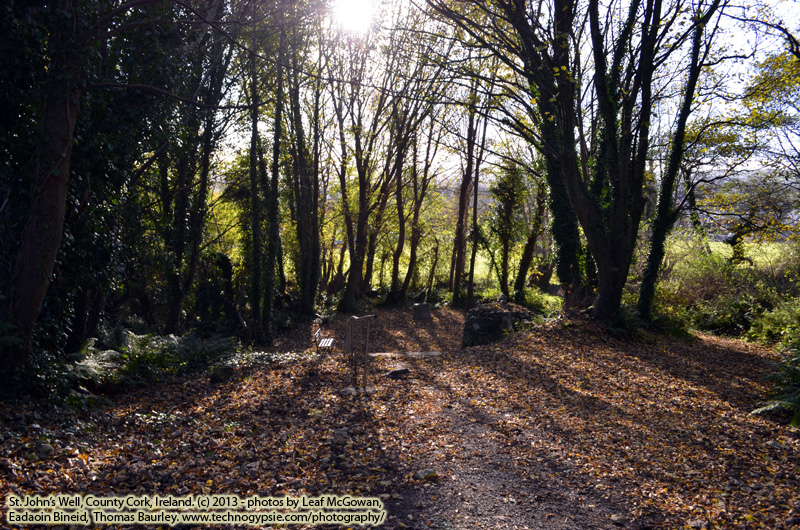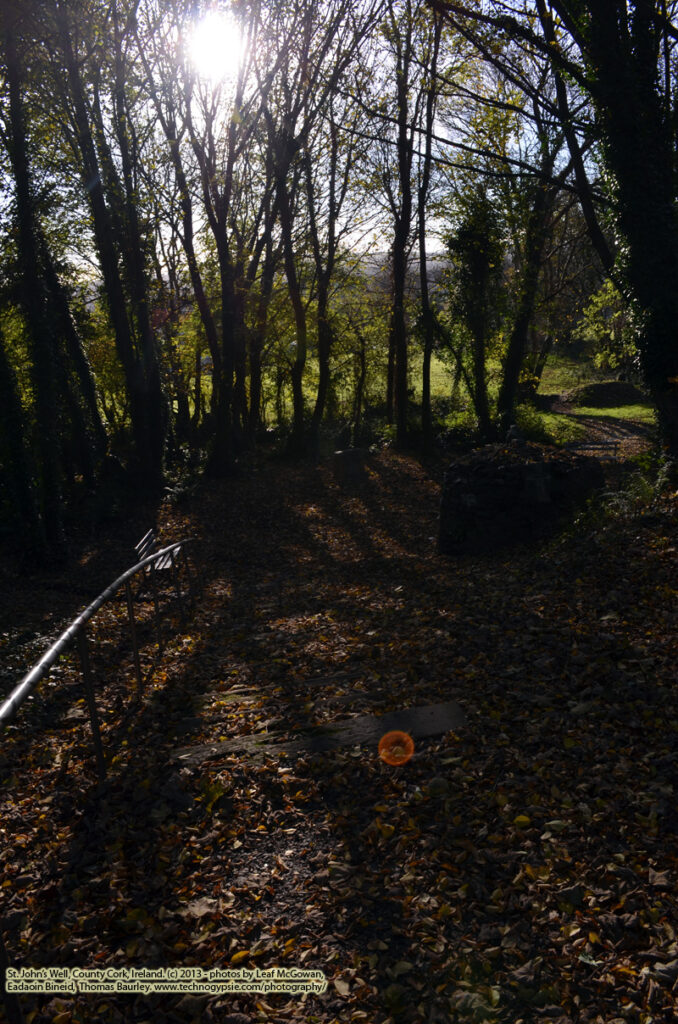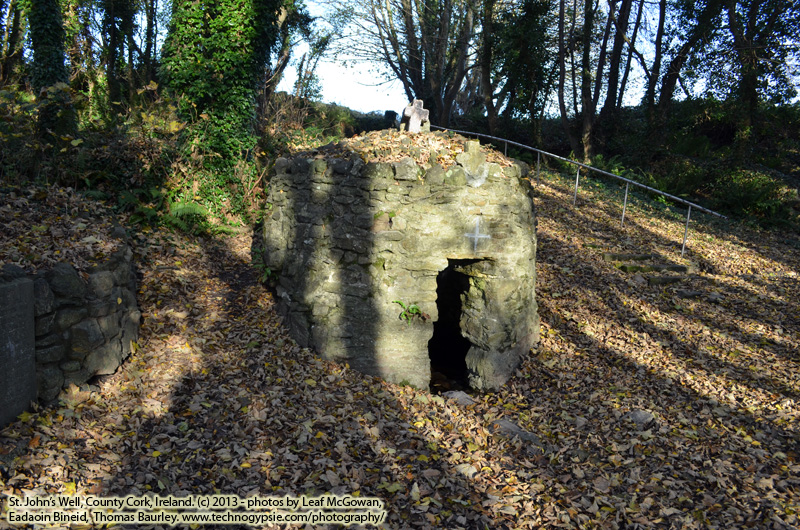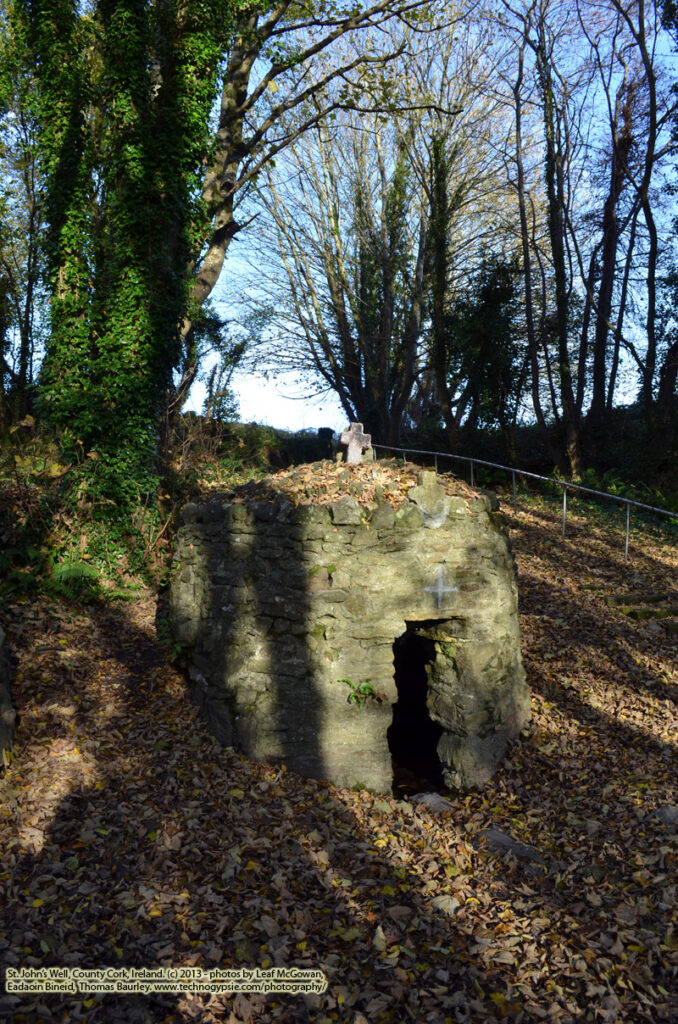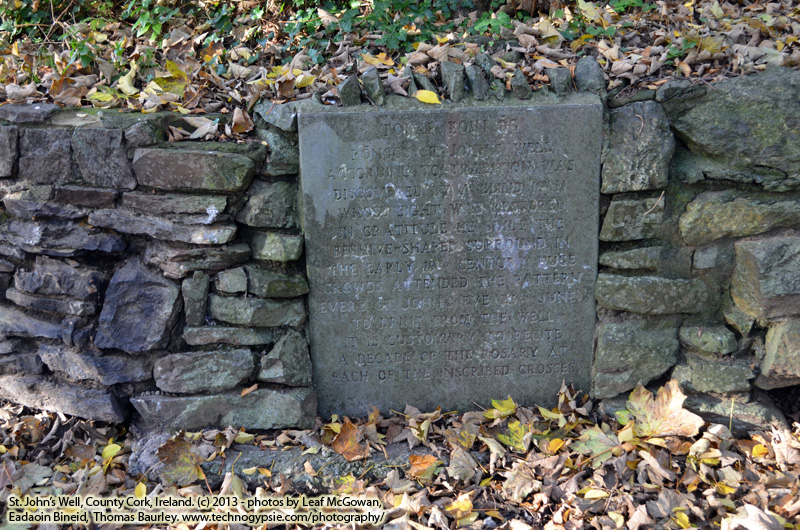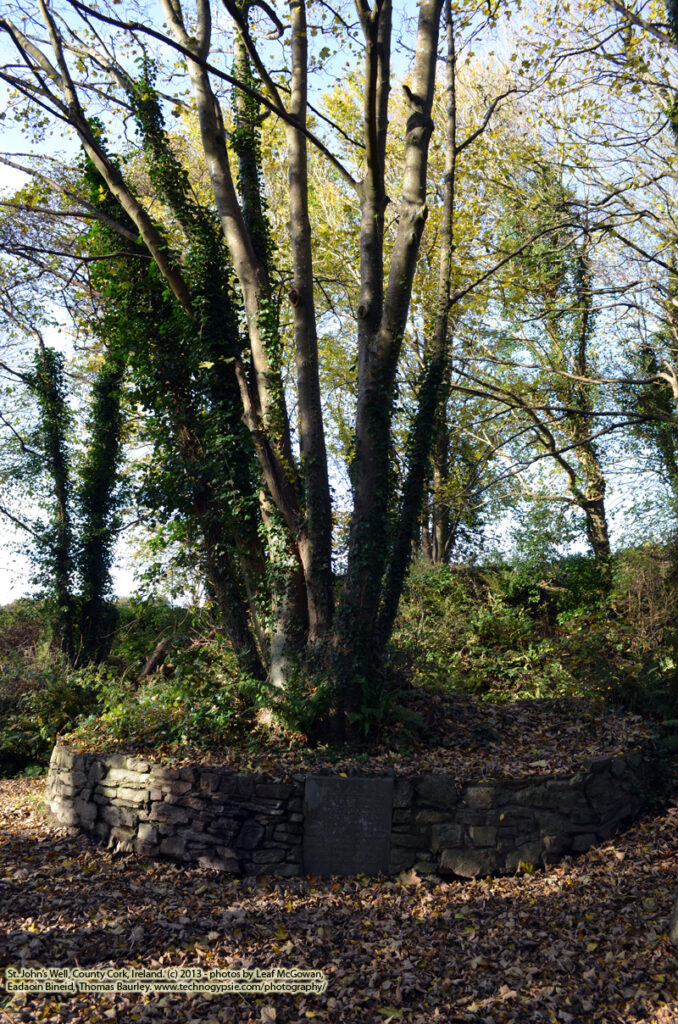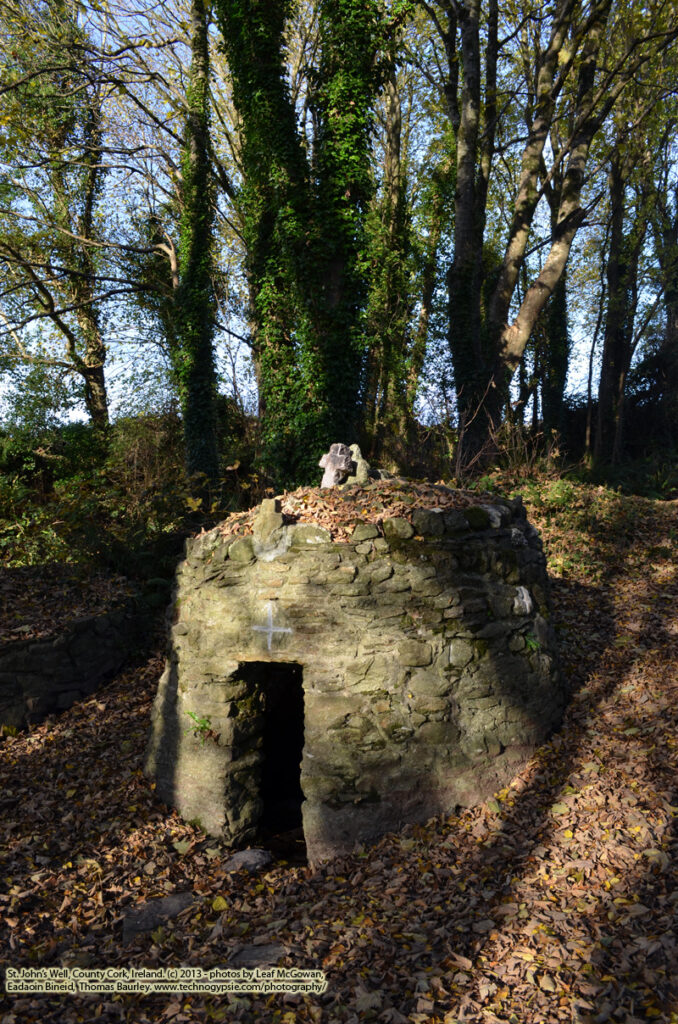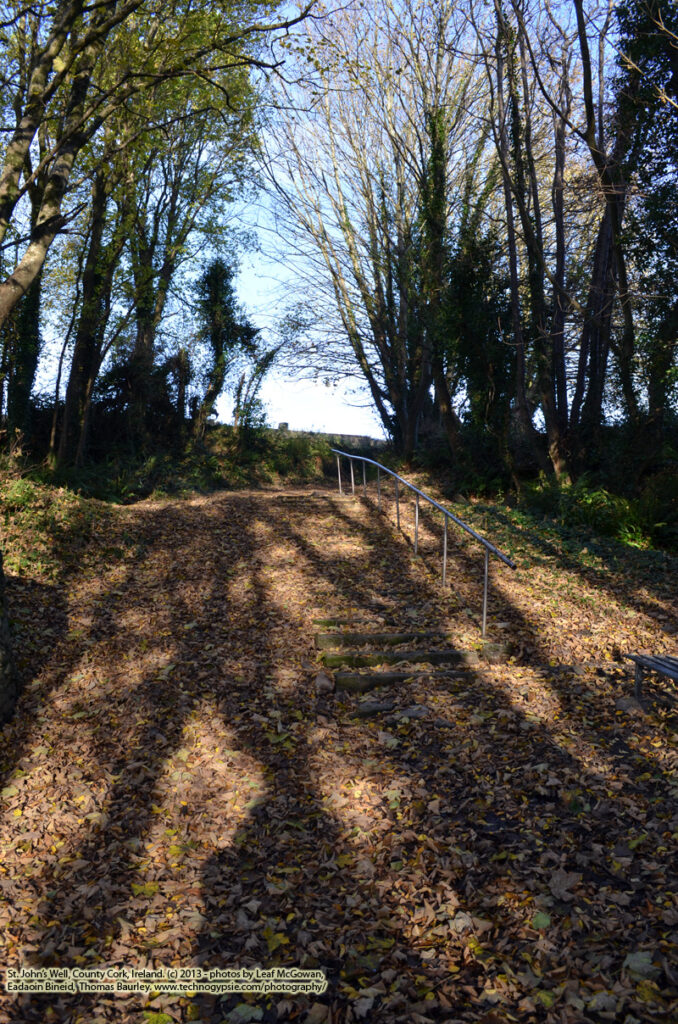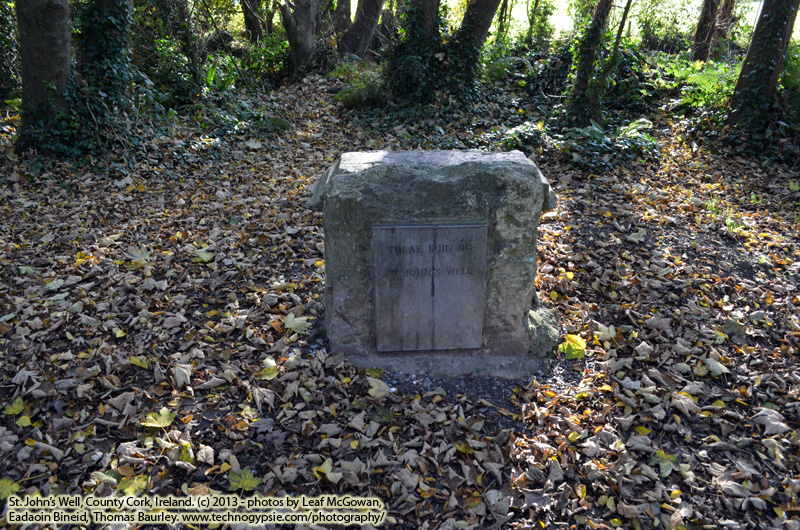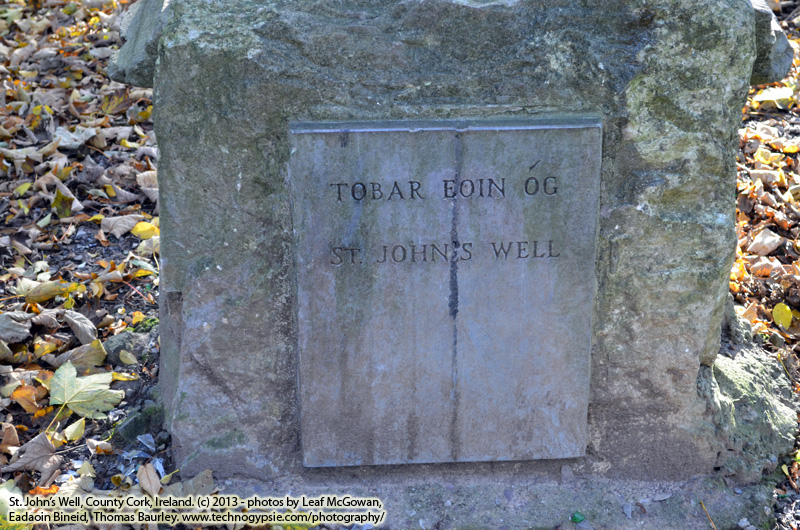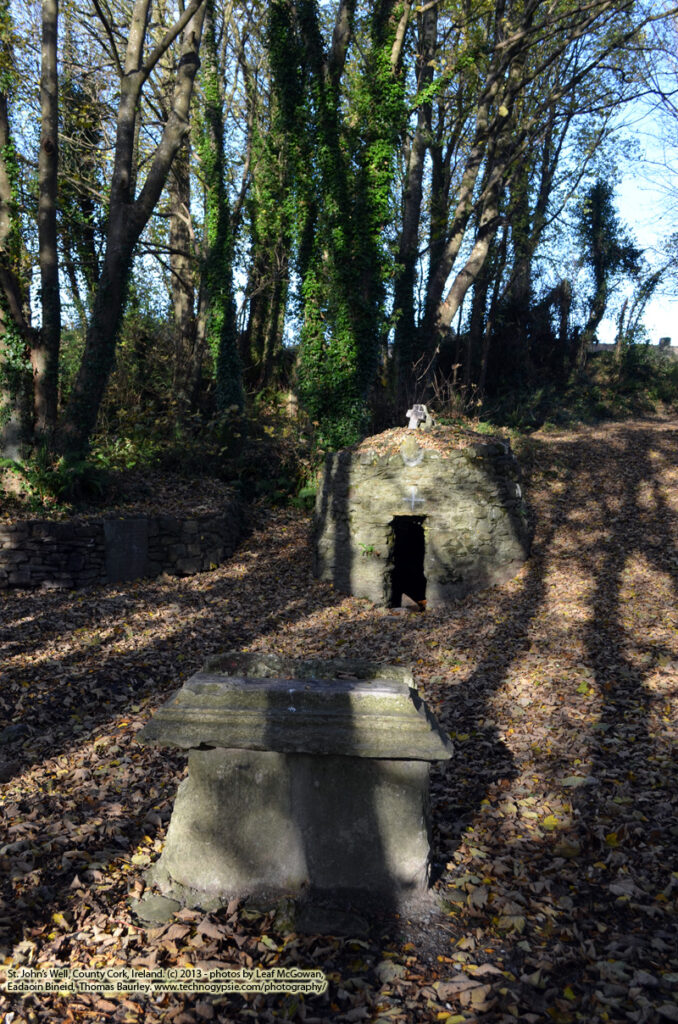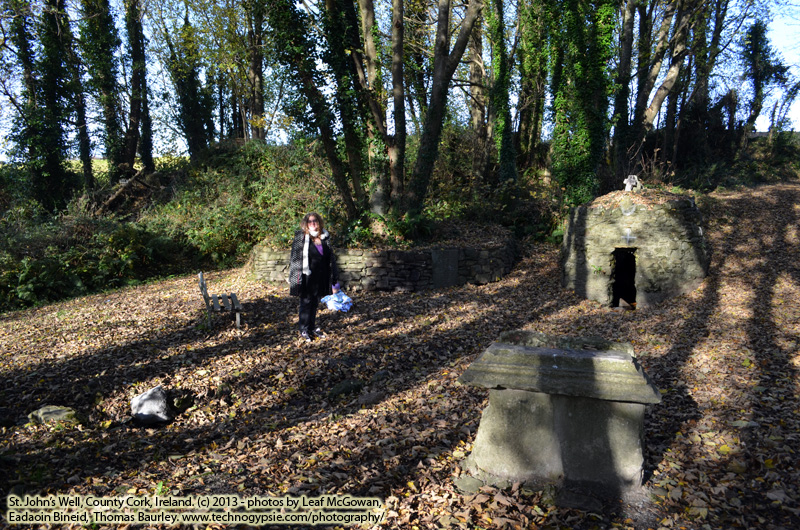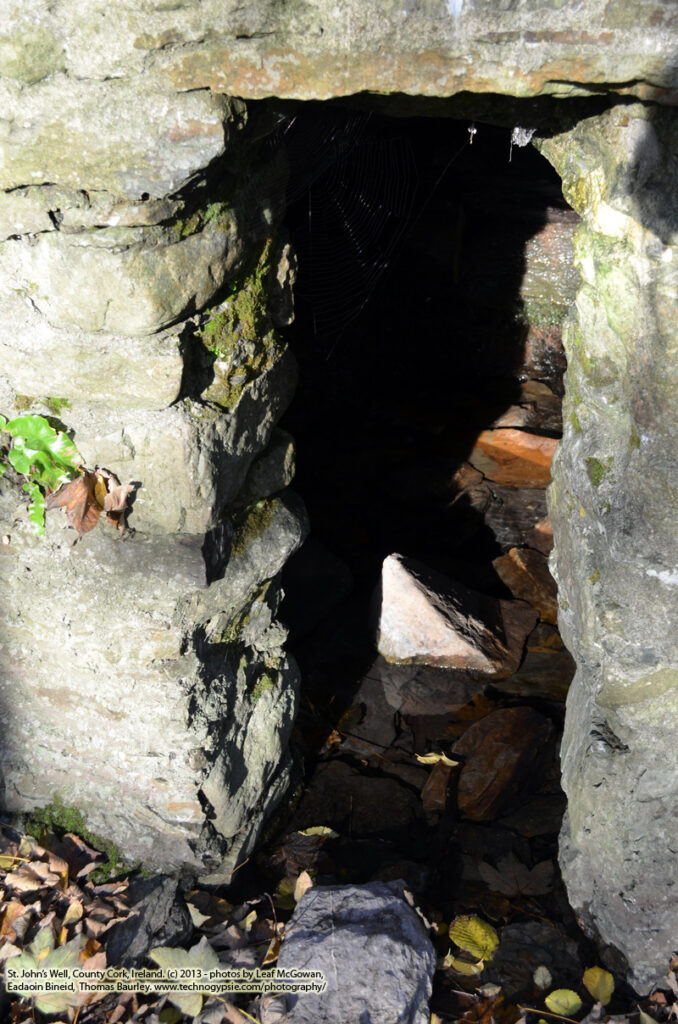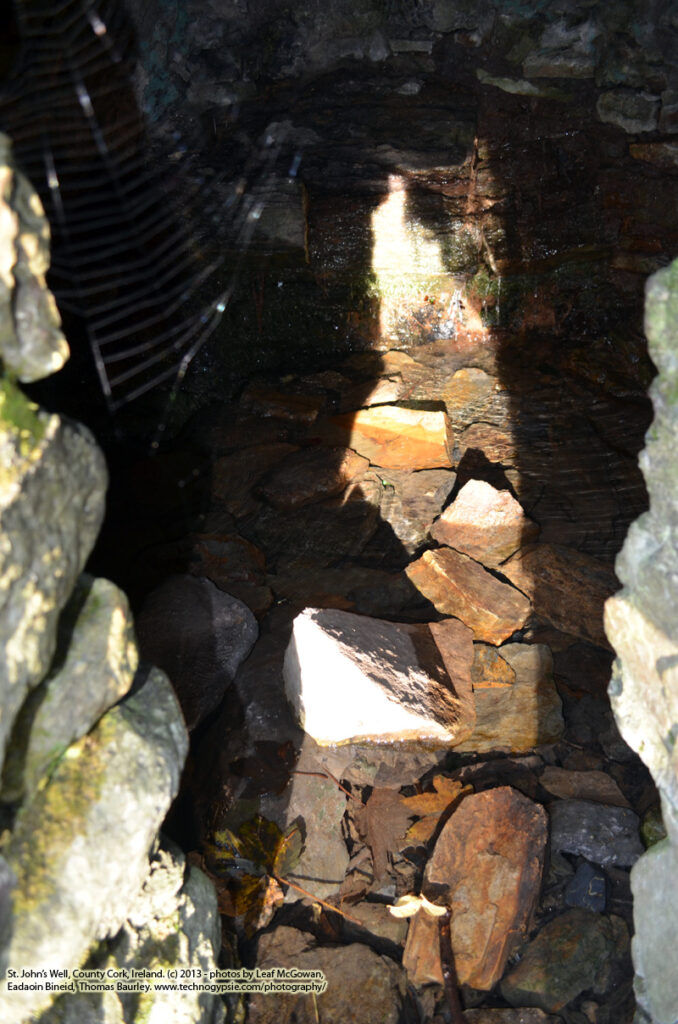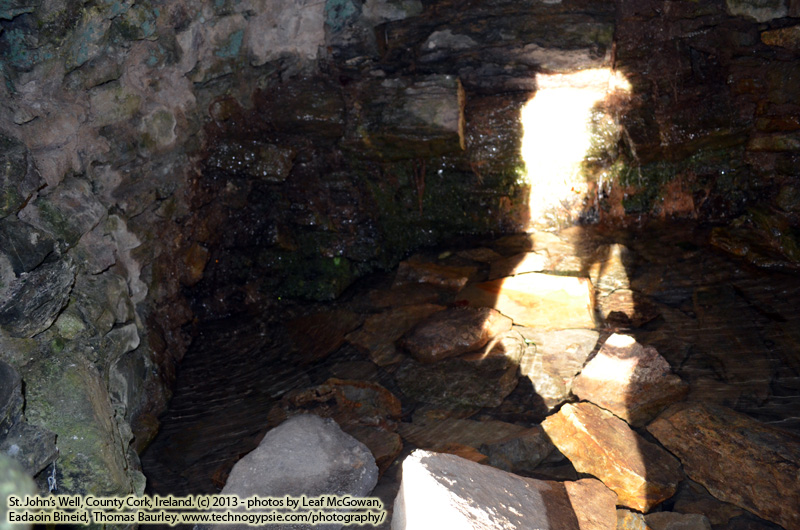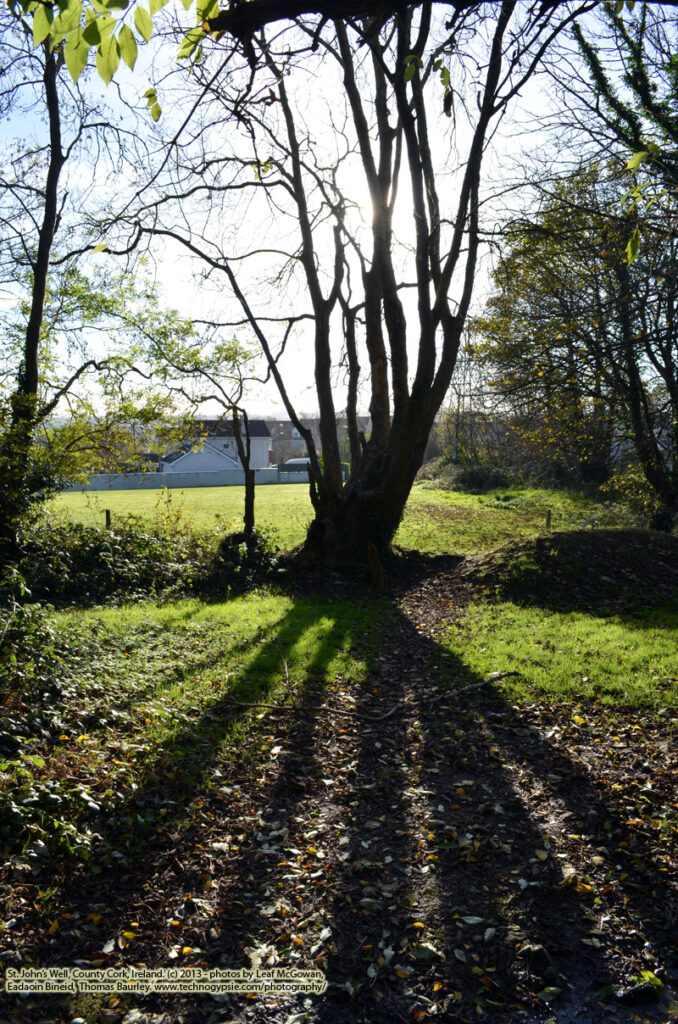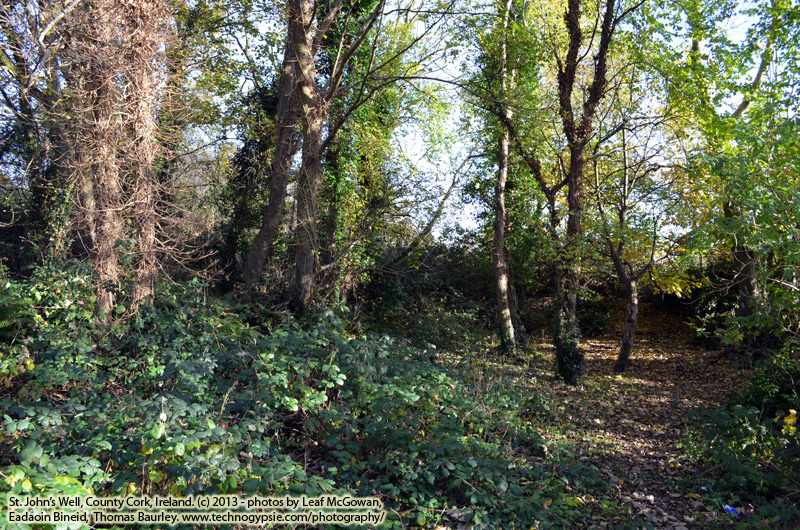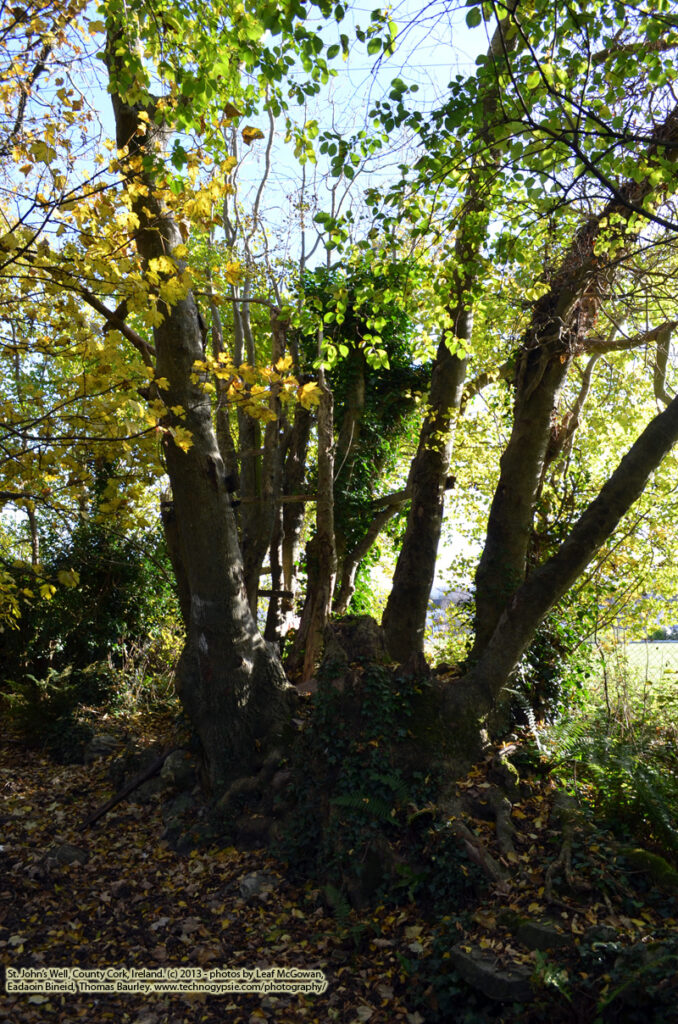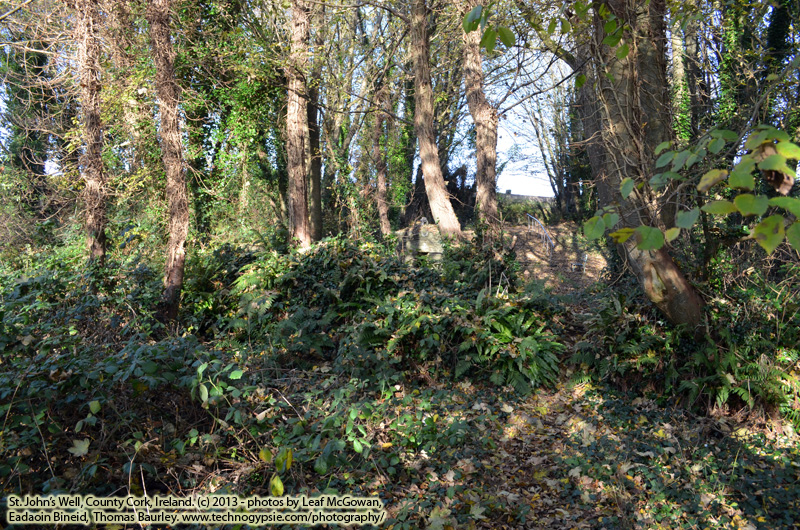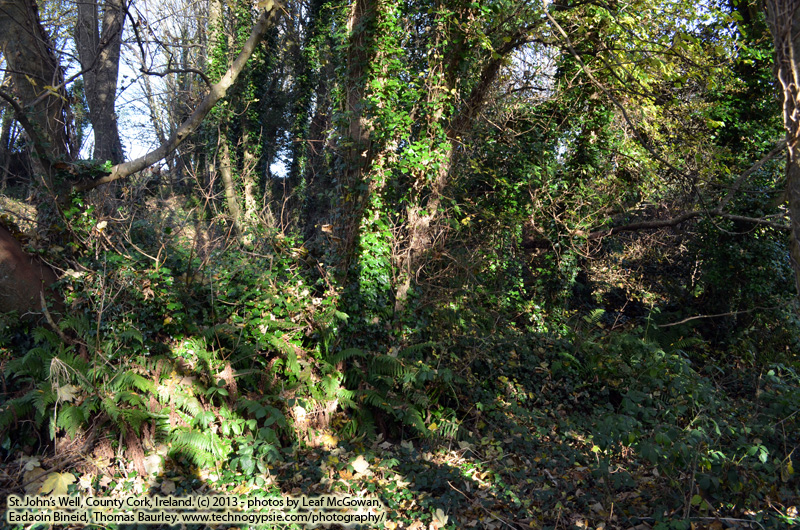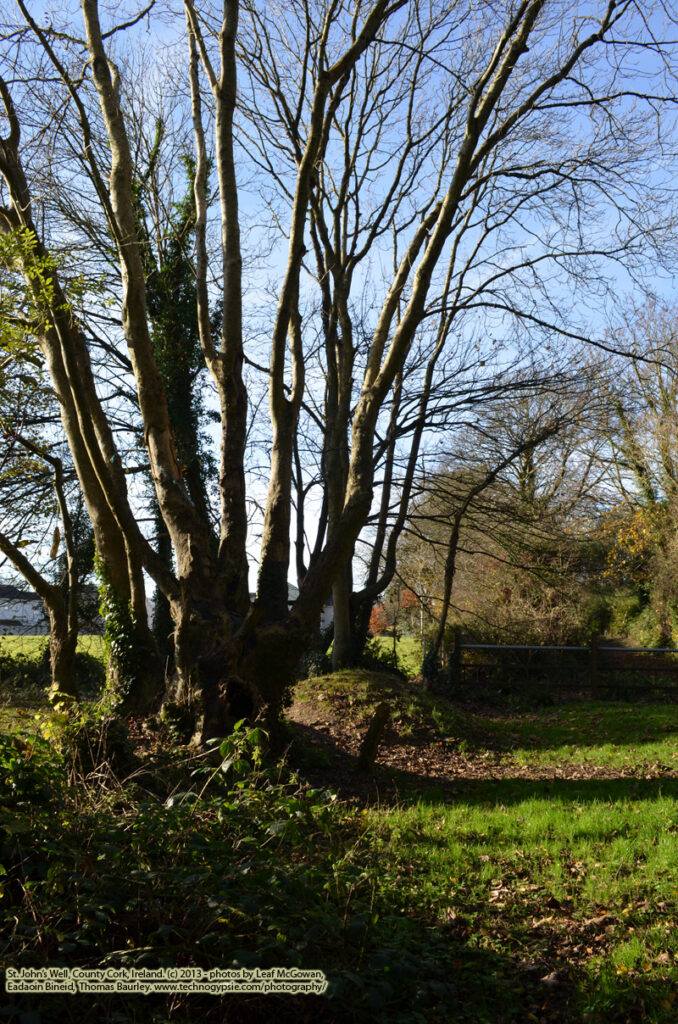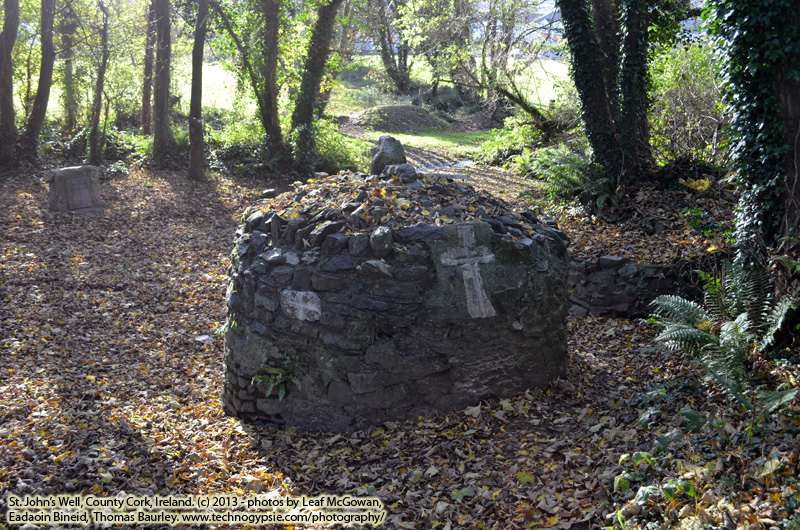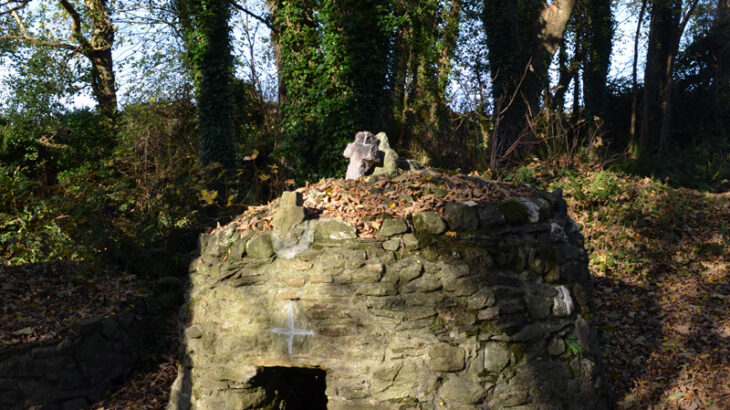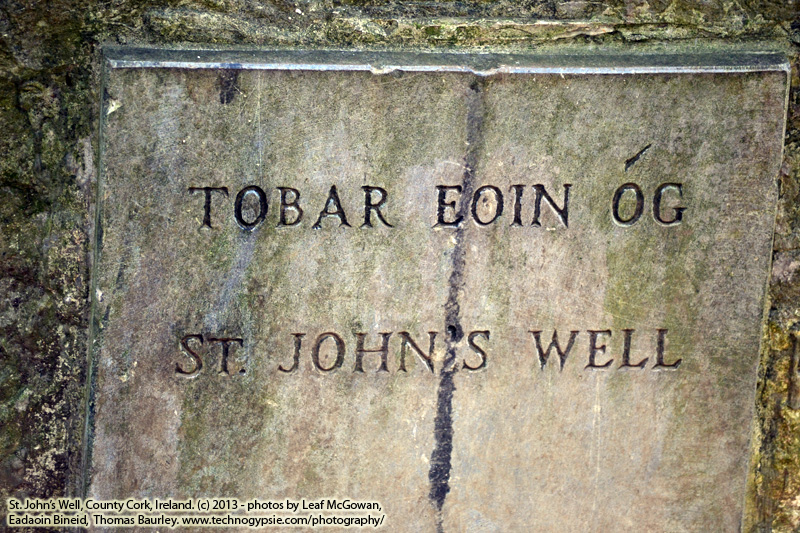
Tobar Eoin Óg: St. John’s Well (Formerly St. Renogue’s Well)
Carrigaline, Co. Cork, Ireland
Written by Thomas Baurley, Archaeologist – Technogypsie Research (c) 2013; http://www.technotink.net
Nestled into the woods between housing estates is a beehive shaped rock cairn covering a historical holy well that today is known as “St. John’s Well” or “Toberabbog”. Since Cork County has a few “St. John’s” Wells, it should be annotated as “St. John’s Well Carrigaline”. It is also called “Tobar Eoin Óg” or “St. Renogue’s” Well, an earlier dedication before St. John took over the well’s magic. The 1840 Ordinance Survey Map records the map as Saint Rinoge’s or Renogue’s Well. It is located to the northwest of Carrigaline, along a residential road and two-track between Ballinrea Road and Ballea Road (R613) and is surrounded by the Dun Eoin residential estates. Even though the well is watched over by parishioners and the local parish, many kids and trouble-makers vandalize and hang out at the site doing controversial activities.
The well is encased and protected by a bee-hive shaped stone structure that resembles a cairn with a small hole from which the water flows. Atop the cairn is a cross in disrepair with scratch etchings of crosses by pilgrims inscribed on the exterior walls. This mineral spring is for the healing of eyes and debilities. Next to the well is a large tree that is surrounded by a low circular wall upon which is a stone plaque that tells a short history of the site. Around the site are a number of benches and steps made of railroad ties. Opposite the well is a small stone altar upon which the name of the well is carved. According to local legend, the well was discovered by a blind man who upon visiting the well, had his sight restored. He was so ecstatic about this miracle, he built the corbelled stone beehive over the well to protect and honor it.
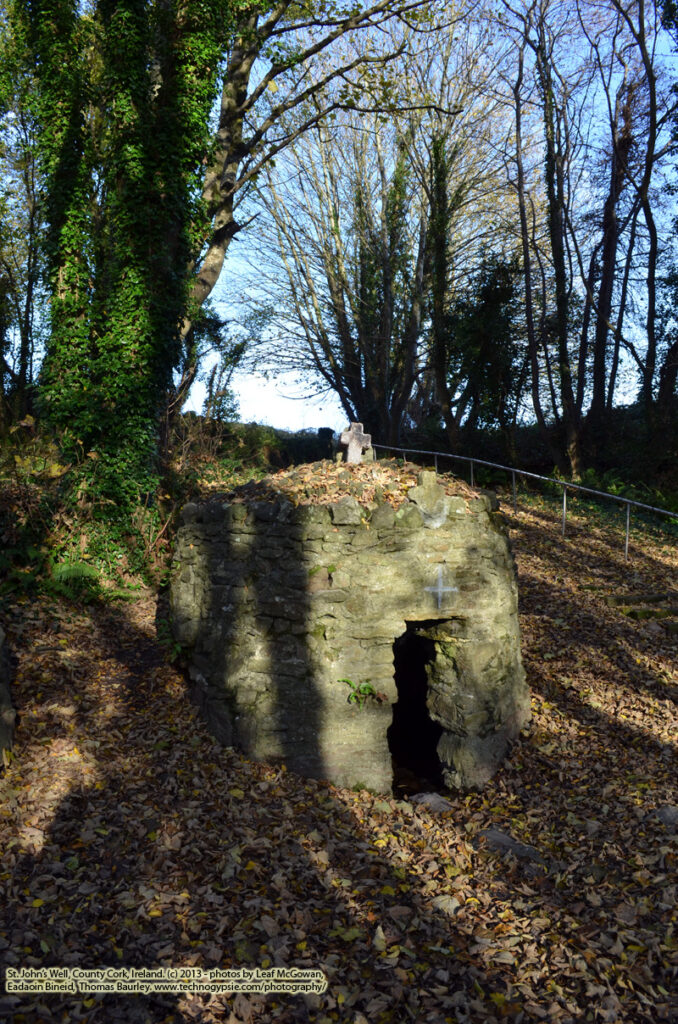
Christian/Catholic observations today at the well are celebrated here on St. John’s Eve which falls on the 23rd of June every year. This is the feast day of Saint John the Baptist. While earlier and older Pagan rites may have been held here celebrating the Summer solstice in similar practices, this well does not appear to be revered by Pagans much anymore.
The Christian celebrations have been in practice since the early 19th century C.E. (common era) and consist of a gathering at the well that number in the hundreds of locals coming together to conduct prayers, hymns, and rites at this particular site. St. John’s Eve is derived from both Pagan and Celtic customs mixed with Catholic devotionals to the saints. Originally began by lighting a bonfire with attendees going to sites where Saint John is venerated. In modern-day practice, the devotions at this well is organized by a small group of parishioners and Catholic parish clergy. The priest brings in the rosary and circles the well while someone scratch inscribes the cross on the stones of the beehive cairn with each mark representing a decade of the rosary.
While the focus is on the clergy, a number of people individually circle the well as well and mark the crosses while praying. The Eucharist is then displayed and venerated during which the Parish choir and the Carrigaline Pipe Band accompany with music. Formal service is performed after which participants go to the well to drink of the waters, bless themselves, and collect some water to take with them for healing activities at home for themselves and loved ones. Some gather water from the flow out of the well while others will crawl on their hands and knees going into the well to get their water. To many, it is very essential to collect the water and touch it at is the exact point of its source where it is the purest. To embrace the magic of the waters, it is custom for the pilgrims to say a decade of the rosary at each of the inscribed crosses found in the walls of the well stones for the miracles to be delivered.
Bibliography/Recommended Readings:
- Carrigaline Parish undated “Carrigaline Parish- Local history”. Website referenced and reviewed on December 22, 2013. http://www.carrigalineparish.ie/index.php/parishhistory/.
- Carrigaline.IE undated “Local History of Carrigaline”. Website referenced and reviewed on December 22, 2013. http://www.carrigaline.ie/pages/history/village.html.
- Haggerty, Bridget date unknown “The Holy Wells of Ireland”. Website referenced and reviewed on December 22, 2013. http://www.irishcultureandcustoms.com/ALandmks/HolyWells.html
- Pilgrimage Medieval Ireland 2013 “Pilgrimage to St. John’s Well Carrigaline, County Cork”. Website referenced and reviewed on December 22, 2013. http://pilgrimagemedievalireland.com/2013/06/26/pilgrimage-to-st-johns-well-carrigaline-co-cork/.
- Scriven, Richard 2013 “St John’s Well Carrigaline” on Liminal Entwinings. Website referenced and reviewed on December 22, 2013. http://liminalentwinings.com/st-johns-well-carrigaline/.
